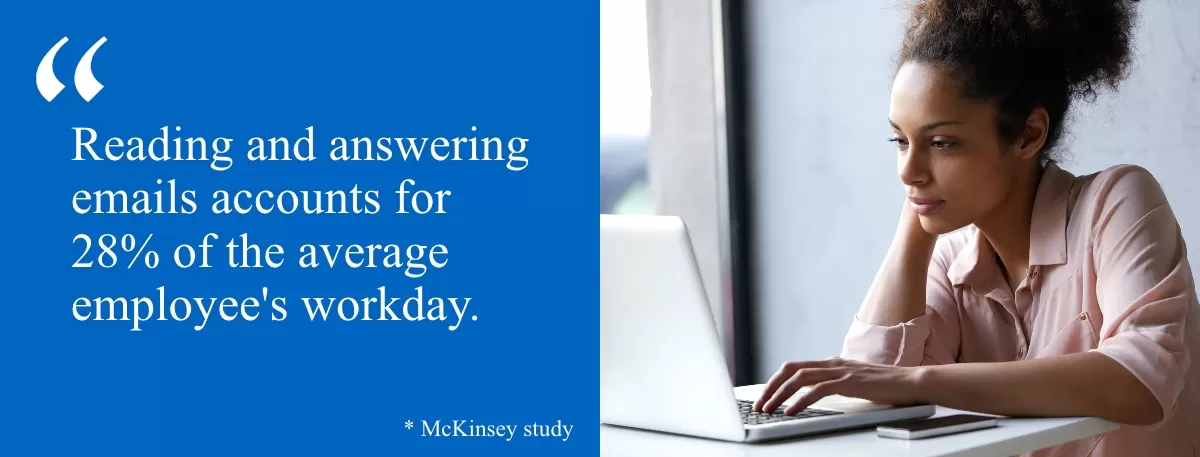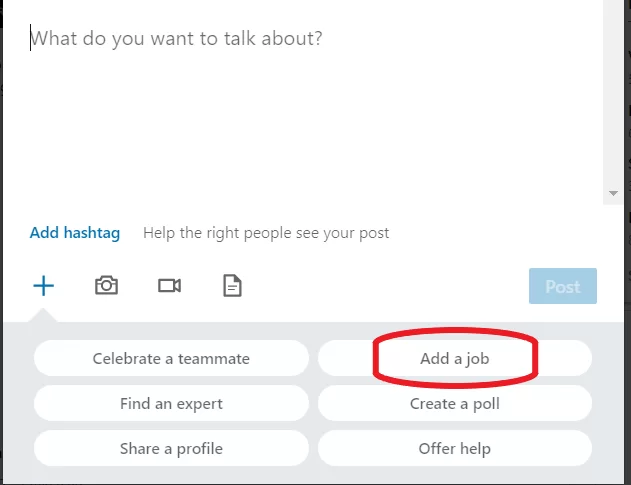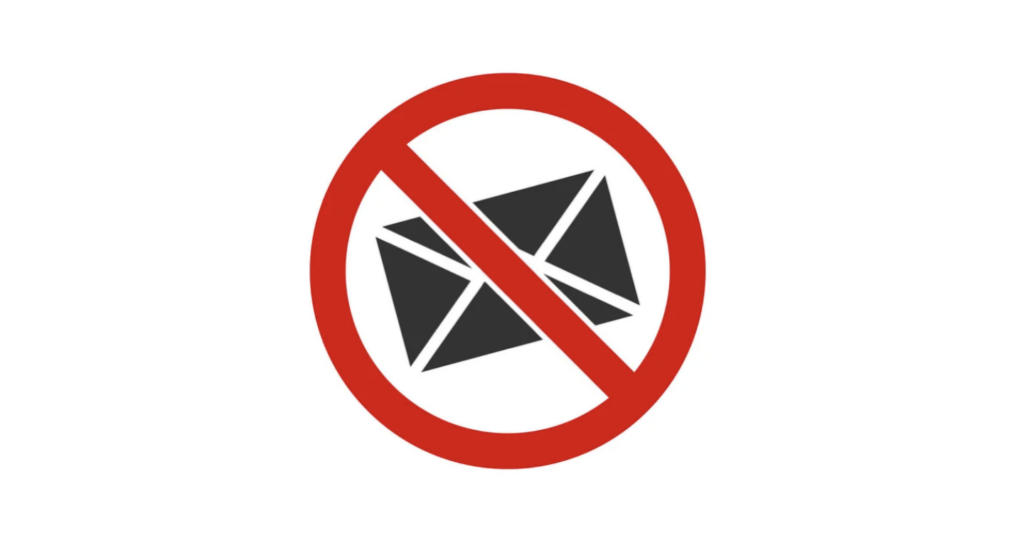If you’re reading this, you want to know how to find the right candidate to handle your email inbox.
Perhaps you’ve searched all the virtual assistant websites and left feeling overwhelmed, or got ghosted after you spent hours training someone. Maybe you’re just worried about handing off your client-facing communication to someone unqualified.
For the last four years, we’ve found and trained top-of-their-class communicators to become email optimization wizards, ready to take on even the most demanding inboxes. We’ve gotten past the hurdles you are likely facing now, and we want to share what we’ve learned.
If you’d like to go straight to our proven 5-step hiring process, click here.
In addition to our hiring process, we’ll be sharing:
- Why the role of an email virtual assistant is so critical and why you can’t just pick any ‘normal’ virtual assistant to do it
- What you can expect your email virtual assistant to be capable of doing for you
- Mistakes we made when we first started out searching for the right candidates, and what we learned from those mistakes
The right email virtual assistant for you is out there, but the challenge is where to find them, how to identify them from the hoards of people that sound good but in reality are not, how to test them and finally train them to work with you.
By the end of this article you will have all the answers…
How Time Consuming Is Your Email?
Have you ever thought about how much time you spend on email.
Maybe an hour a day? Maybe two?
Even after you take care of what needs attention in your inbox, how long does it take you to refocus on work that actually drives revenue?
The emails that flood your inbox are the number one disruptor of deep work – work that is more important, productive and more fulfilling than the never ending chase to reach “inbox zero.”
In a recent study conducted by McKinsey, data showed that reading and answering emails accounted for 28% of the average employee’s workday.
For the average full-time worker in America, that amounts to roughly 120 messages received per day and 2.6 hours spent replying. For an independent business owner, these numbers are even more overwhelming.
The data only gets worse from here…
While 28% of our time is taken up by email, it accounts for far less percentage of our productivity and output.
On top of that, 62% of all email is not important and can be processed in bulk. But even bulk-processing takes time. So does unsubscribing, labeling, deleting and replying.
As a business owner, you know two things for sure:
- Your inbox is one of your most tangible lines of communication with your customers.
- Your time is valuable.
Hiring an email virtual assistant to protect and optimize your time is a great solution. But it’s important to set clear expectations that move your business forward, instead of slowing you down.
Can You Expect A Virtual Assistant To Know How To Handle Your Email?
Many business owners hesitate to delegate their email because to manage an inbox successfully an email virtual assistant needs insight into your business. They need knowledge only you have if they are to handle your email for you.
To make things more challenging, you can’t just hire a standard virtual assistant expecting them to be email optimization experts.
Functions like triage (designating between important, time-sensitive and lower-priority emails,) filters that send emails to folders or forward them out of your inbox, even sourcing and studying your responses to create a database of knowledge based on common questions, are something that an unspecialized virtual assistant will not have the experience to hit the ground running with.
Nevertheless, search “email virtual assistant” or “email personal assistant” and you will have options – more than 17,000 on Fiverr, in fact.
Just because you can find that many candidates doesn’t mean every single one of them is qualified to manage your inbox.
In other words, it’s not an access to candidates problem. It’s a quality of candidates problem.
It’s impossible to sort through that large a sea of candidates. You’ll waste time attempting to do so. We learned this from experience.
Mistakes We Made At The Beginning Phase of Hiring Email Assistants
The two most important lessons we’ve learned after spending four years vetting email assistants are the following.
Lesson Number 1: Don’t Ignore Red Flags During Hiring
As our founder Claire puts it:
Excellent candidates do not have red flags, they should be an easy yes.
Here is an example of a red flag: One of our hires didn’t demonstrate patience throughout our hiring process.
He cut corners on tasks, left in typos, didn’t follow directions and seemed rushed overall. We moved forward with this candidate because of the other good qualities we saw, but ultimately, it was not a good fit.
We’ve found that candidates who do not respect our thorough hiring process usually want a short-term gig or a quick way to make money. This mindset could translate over to their work with our clients and goes directly against our business model of building a long-term relationship with each new hire.
How we solved this: We mitigated this problem by adding a new explanation to our hiring page (and asked this question during the final interview:)
“Our team is made up of A-players who want to grow with our company and clients for the long-term, not individuals looking for a short-term gig. Please explain how you see this role fitting into your future plans.”
Lesson Number 2: Manage And Set Clear Expectations
You will find that measuring the success of your email virtual assistant will depend on some KPIs (Key Performance Indicators). These are important because they help you to clarify in a very practical sense who is a good candidate to take over your email, and who is not.
However, at first we didn’t know what these KPIs were, or specifically, what a good performance was and when a performance was not up to par.
After going through the hiring process several times, and working with clients, we began to cement what KPIs were important and learned how to judge a good performance.
Going forward, during the hiring process we set clear expectations of what metrics we are assessing so potential candidates know what is important to us. A-Player candidates will ask for this clarification upfront before we even offer it.
Here are some of the most important KPIs we focus on so our hiring process is measurable:
Hourly time caps: During our 30-day trial period for new hires, we assign ten hours of work per week to start. In the early days, we’re evaluating their output against their effort, so how they manage their time within this cap is key.
Deadlines: We set strict deadlines throughout every step of the hiring process. For example, “Return Task 1 in 48 hours. Return Task 2 in 3 days.” This is also about expectation management on their end. We should never have to wonder when something will be finished, or if a task is being worked on. The candidate should offer updates without us having to ask.
Response Time: Our standard for email is a 24-hour turnaround time. Especially during the first 30 days with the client, quick responses (in Slack or email) are key. It’s the first impression they are making.
Word caps: We apply word caps to emails they send on behalf of clients and in the tasks we give them during the hiring stage.
These metrics are excellent tools for assessing whether a candidate is efficient, effective and can work within set parameters. If they can’t, you shouldn’t hire them.
Meet Justin Brooke — The Man Who No Longer Checks His Email
Justin is the founder of AdSkills, an agency that helps train people to become advertising managers.
Justin has a big following online and a thriving business, so when he recognized the toll that email was taking on this time – more than 10+ hours a week – he knew something had to change.
Many entrepreneurs turn to virtual assistants to recoup their time. This was Justin’s initial approach. Because the need for virtual assistants is growing, the skillset of a virtual assistant is often broad – but not always deep.
I always struggled with being able to find the right assistant, to train them. And there is no perfect automation strategy.
— Justin Brooke
Does this sound familiar?
When Justin came to InboxDone.com looking for help with his email, he was ready for an email specialist, but tired of trying to find the right person.
We were able to provide Justin with an email specialist from our team, who then went to work with Justin to carefully take over his email.
Once the training process was complete, Justin never went back into his email inbox again. His inbox was taken care of by his email specialist and anything important he needed to know about was communicated to him using Slack chat or mobile phone text message, his preferred communication methods.
Now that you understand why the role of an email virtual assistant is so critical, some of the mistakes to avoid as you begin your search, and what your expectations of the candidate should be, we’re going to dive into our 5-step hiring process.
As Justin Brooke experienced firsthand, finding a virtual assistant is easy, but just because so many people are ready to help doesn’t mean they actually can.
There are big risks if you end up hiring the wrong person:
- More time spent training and explaining your processes than you ultimately save by having an assistant in the first place
- Poor quality work that in turn reflects poorly on your business and upsets your customers
- A language barrier that causes miscommunication and misunderstanding
Our 5-Step Hiring Process To Find Qualified Email Virtual Assistants
First, a warning: If you choose to follow our methodology, expect to spend between 4-8 weeks searching for a candidate in order to successfully onboard an inbox manager.
Here is a breakdown of what that timeframe entails:
- Distribute your listing
- Aggregate a list of candidates and disqualify until you have a manageable pool
- Conduct a small test on that pool
- Based on the test results, select the candidates you want to move forward with for an interview
- Hire a candidate for a 30-day trial period
Let’s discuss each step in detail…
Step 1: Construct And Distribute Your Listing
Your job posting should make both the position and your business stand out by appealing to the qualities and interests of the candidate you are trying to attract.
We strongly recommend publishing a job listing on your own website. If you want to see what our tried and tested job description looks like, click here.
Here are a few things we include in our job posting.
- Include who you are: This is where you can begin to introduce yourself and your company so the right candidate will know how to research and prepare to meet you.
- Include “a day in the life”: Set clear expectations for what the duties of the job will include. Be upfront about potential deal-breakers as well as success factors. Setting clear expectations with candidates from the beginning will get a better fit in the end.
- Include what you are/are not looking for: Be as specific and as clear as possible including qualifications, degrees, certifications or proficiencies that you want your candidate to possess. If the qualities are must-haves, make that clear.
Once you have constructed your job listing, you’ll need to get the listing in front of the right eyes. The best advice we can give at this stage is to utilize the power of your own network.
How We Find Candidates
The following methods are how we search for candidates, in order of preference and in order of what we have found most successful.
Email Newsletter/Blog Audience/Social Network
If you already have a dedicated number of email subscribers and/or blog readers who engage with your content, these channels are a great opportunity to crowdsource candidates. These people already know, trust and like you, plus may have familiarity with your work if they have followed your content for years.
Social media can also surface candidates if you have a good sized following on platforms like Twitter and Facebook.
If you don’t have these resources, you can turn to colleagues you trust who would be willing to share your job listing with their networks.
Include a link to your job listing with a short description in your email newsletter and/or blog post. Not only are you likely to receive responses from those subscribers, they may share it with their own networks as well.
Once your listing begins to gain momentum you may find that your job opening spreads itself.
Referrals
When you hire A-Players, one of the best ways to find more A-Player candidates is to ask your current staff. Talented people tend to have talented friends and people in their network, so make sure your current team knows you are looking to hire.
Once you exhaust your immediate network and people who follow your content, but you still need more candidates, you can expand your search to other platforms.
We like LinkedIn as a ‘next best option’ because of the focus on professional/job networking.
No matter how many (or few) connections you have, a LinkedIn post can get in front of hundreds to thousands of job hunters. Your connections on LinkedIn can also recommend candidates based on your job listing.
It’s easy to list a position on LinkedIn – you can do so from the home page.
Freelance Job Sites
If you utilize the above options you hopefully won’t need to take this step and attempt to find a quality candidate within the ocean of people offering services on freelance work sites.
But, if you do, sites like Remote.co, Upwork, Fiverr, or Flexjobs contain good people — you just have to do the digging to find them. We’ve had the best results with Upwork, but we’ve also had terrible results with Upwork, so be prepared for variability.
Step 2: Sift Through Pitches And Disqualify
Sorting through applications can feel like an overwhelming, nearly impossible task. It can be tempting to hire the first candidate who fills out the application correctly, but be patient.
Here are some red flags to look out for to disqualify people, and some indicators that a candidate may be worth taking to the next step in the hiring process.
- Attention To Detail: One of the best ways to get a sense for a candidate’s attention to detail is by noticing their spelling. It’s simple, but a perfectly spelled application means they went over it with a fine tooth comb to check for mistakes. That is the kind of candidate you want handling your email.
- Adaptable: The best way to gauge adaptability is by taking notice of their employment history. Has the nature of their work changed along the way, or is it mostly in the same field? A more diverse breadth of work experience means they were able to adapt to different work environments and different responsibilities. This is key for an email virtual assistant because your inbox is a very dynamic environment.
- Fast Learner/Self Taught: What kind of skills and certifications do they have that they took the initiative to learn or complete themselves? Do they have a multi-disciplined array of skills that could benefit you, perhaps, beyond email?
- Autonomous and Proactive Thinking: This is one of the most important things to look for. Your candidate should be able to demonstrate, either specifically on the application or during the interview and testing process, that they know how to take initiative and prioritize their tasks based on their understanding of your business. They should be able to see an email and understand where that email fits into the big picture of your business.
They should be able to work without needing hand-holding for every decision and even come up with solutions to problems that are better than your own ideas.
As you scroll through the endless descriptions and pitches from freelance workers, you’ll note that very few are specific to email or inbox assistance. Instead, they may list their service as a “virtual assistant,” and include email as one of the features of their service.
We noted this too. That’s why step 3 is so critical to your search…
Step 3: Testing Candidates Technical Ability
One of the ways we test candidates beyond the interview is by conducting two short and simple tests.
We believe this step is essential. Not only does it bring skill sets to the surface it also eliminates candidates who don’t care enough about the position to complete these short exercises – making the rest of the process even simpler.
Here are the exercises we assign…
Assignment 1: Answer a sample email, 150 words max.
This simple assignment allows you to see their writing style, whether or not they checked for typos, and what their attention to detail is. Here is an example straight from our application.
Please Answer The Following Test Question:
A lot of our clients’ customers purchase digital products and services because setting up an online business alone is an isolating journey and they need support and encouragement. Sometimes customers will ask to cancel because they have lost hope, so each response requires a lot of care and empathy to retain them as customers and help them not give up during the early months (the hardest stage of every new business).
Imagine you are the inbox manager for an online business. A customer for one of your client’s courses writes the email below and asks to cancel. She is a dancer trying to start an online business about using dance as a method for treating depression. Respond to the email (in under 250 words) using whatever you feel is the best approach to a) try and retain the customer, and b) demonstrate the benefits and value of remaining in the program.
The Email
Hi there,
Well I now feel like I’ve tried everything. It’s been 6 months since I joined your program and tried to start an online business, and so far nothing is working. I’ve been through all the course materials twice and tried to follow all the steps but I just feel totally overwhelmed by all the information about marketing, sales and promoting my services. I’m a dancer, not a saleswoman!
I’ve had a few more customers sign up since I started the program but it’s barely enough to cover my business expenses, let alone the time I’m putting into it. It’s really disheartening because like most people in the course, I’ve always dreamed of running an online business and living the laptop lifestyle.
But now I’ve decided it’s just not for me. I’m just going to stick to teaching salsa at local dance schools and instructing Zumba at the gym – at least that way I know where the money is coming from. Can you please cancel my membership so the monthly fee is no longer deducted from my account?
Thanks for your help,
Lisa
How they respond to this email gives us remarkable insight into their writing style, attention to detail and tone of voice.
Assignment 2: Write a bio for yourself in the third person as if you were hired.
This assignment tells us if they went to our “about us” page to get a sense for what our tone of voice is. It also tells us the candidate’s balance of confidence and humility.
You will get a sense of the competency of your candidates based on these exercises. With that insight, you can eliminate more people and select a pool from these candidates to bring on to the interview phase.
Step 4: Conducting Interviews And Checking References
One of the best places to get a fuller sense of your candidate’s judgment is during the interview process.
During the interview, ask open-ended questions, like:
- How did you end up where you are today?
- What is your favorite way to communicate?
- What are you most interested in learning more about?
- If I asked you to perform a task, and after accepting it you realized you couldn’t do it on your own, what would you do?
- Tell me about a time you took unexpected initiative. Follow-up: Can you tell me about another?
How To Check References
Always ask for references, and actually call them. It’s an easy way to avoid an expensive and time consuming mistake.
One of the things we do to make checking references less time consuming is by emailing/calling the reference and using a variation of the following directive:
Hi [name],
My name is Jeff, manager at InboxDone. <<<Include the link to your business for bonus exposure!
[Name of applicant] is currently being considered for a role within our company and has included your name as a professional reference.
This position requires superior communication skills, precise attention to detail, the ability to juggle many moving pieces and an openness to constructive feedback.
If this sounds like a role you feel [Name of applicant] would excel in, then we’d love to know:
Why would you recommend [Name of applicant] and why is [he/she] an A-player?
And if you do not wish to recommend [Name of applicant], then there’s no need to respond to this email.
Thank you for your time!
This way, the reference has an easy out if they do not wish to recommend the candidate, and you can save yourself time moving forward with the wrong candidate.
Step 5: Conduct A 30-Day Trial Period
Ascribing a 30-day trial period into your onboarding process gives you a chance to see how the candidate you selected performs before you commit.
Here are a few key performance metrics you can watch for during this trial period:
- Response/Turnaround Time: How quickly do they answer emails? Are they easy to get in touch with? Do they spend hours on a task that should take minutes? Do they observe the 24-hour standard?
- Organization: How well do they juggle new pieces of information? How do they present details in daily recaps? Do you know how they keep track of their tasks and projects?
- Communication Style: Although this can be subjective, are they able to match your tone of voice and writing style? Do they CC you on things you want to be cc-ed on, or don’t want to be cc-ed on?
- Initiative/Proactiveness: We mentioned this skill to look for in the application process, but, sometimes it can only be demonstrated (or not) in practice. Watch to see if they propose solutions to problems – both yours, and your clients – that are aligned with your business objectives and values. See if they suggest ideas with the questions they ask, rather than just putting the ball back in the client’s court.
- Adaptable: If they have come in with prior virtual assistant experience, are they able to adapt to your preferences and learn new information, or do they push back with their own preferences and procedures?
This is often reflected in their overall attitude when they are presented with any new information or procedural instruction.
How Much Should You Expect To Pay An Email Virtual Assistant?
Virtual assistants charge anywhere from $1 to $100 per hour.
An email virtual assistant is a specialist and should not be seen as a general virtual assistant, so don’t expect to find anyone good for $5 an hour — especially if you want a high standard of English communication (a very important skill in an email assistant!)
You’re looking for someone with the ability to learn about your business and life, adapt to the demands of your inbox, build systems, respond dynamically to a diverse range of issues and possibly even become part of your sales process — it’s a role that deserves someone talented, and thus someone you pay well.
In terms of payment structure, some assistants prefer a monthly retainer while others prefer to be paid by the hour. It’s within your rights to negotiate, but it’s also within their rights to negotiate.
It’s your choice whether to bring your email virtual assistant onto your payroll as an employee. If you choose to keep them as a contracted freelancer, they’ll need to fill out a W-9 form.
To transfer funds we’ve used everything from Paypal, to Venmo, Payoneer and direct bank transfer. Sites like Upwork and Fiverr coordinate payment directly through the platform. Currently we love Transferwise as it allows us to handle multiple currencies and get the best conversion rates, and send money direct to bank accounts with lower fees than Paypal.
We Are Here To Help
If you need advice on how much to pay an email assistant, how to find, test, interview and onboard someone or have any questions about what I have written in this article, leave a comment and I will reply.
At InboxDone, our specialty is this process. We spend our days hunting down the “needles in the haystack” of email virtual assistants, so you don’t have to.
Remember Justin? When he started working with one of our inbox managers, he went from spending 10+ hours on his inbox per week to around a half hour. He got his time back.
We don’t have to tell you that your time is valuable too. You should be spending your time on what matters to you, not dealing with the time-wasting emails that come in every day.
If you want to learn more about InboxDone and whether one of our inbox managers is right for you, book a discovery call, we’d love to hear from you.
Emily
InboxDone Trainer
www.inboxdone.com






